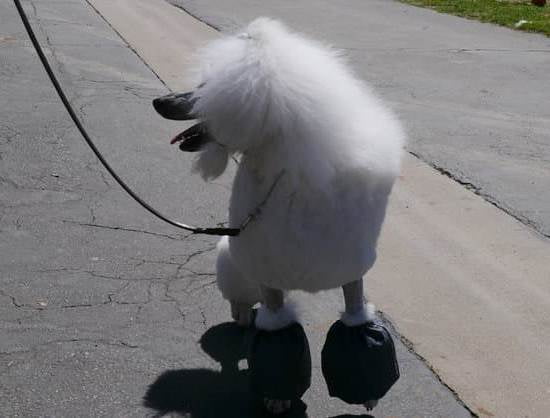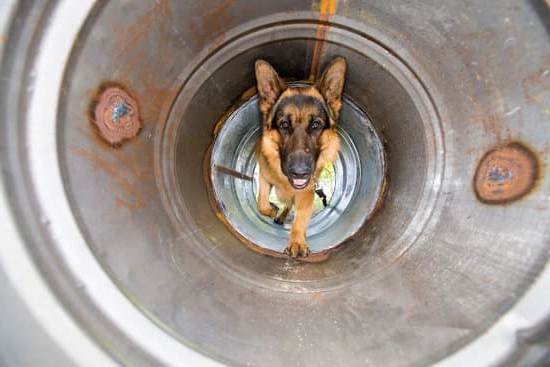There’s nothing quite like the sound of a dog crying to make you feel guilty. You might be out for a walk, at work, or just trying to relax and suddenly you hear your dog’s plaintive cries. It can be tough to know what to do when your dog is crying in his crate.
The first thing to understand is that your dog is not crying to manipulate you. Dogs don’t have the same understanding of language that we do, so they can’t cry on purpose to get what they want. Dogs cry in their crates for a variety of reasons, most of which are related to their natural behavior and instincts.
Dogs are den animals, and they feel most secure when they can curl up in a small, enclosed space. When a dog is in his crate, he feels safe and secure. This is why many dogs will relax and even fall asleep in their crates, even if they’re normally quite active.
However, there are also times when a dog will cry in his crate because he’s uncomfortable or afraid. Maybe he’s been crated for too long and is desperate to get out. Maybe he’s been crated near a loud noise or during a scary storm. Or maybe he’s just not used to being crated and is feeling anxious and scared.
If your dog is crying in his crate, the best thing to do is try to figure out why he’s crying. If he’s been crated for too long, try to let him out for a break. If he’s been crated near a loud noise, try to move his crate to a quieter spot. If he’s just not used to being crated, try to slowly introduce him to the crate using positive reinforcement.
Most importantly, don’t get angry at your dog for crying in his crate. He’s not trying to upset you, he’s just trying to communicate his needs. By understanding why your dog is crying, you can help him feel more comfortable and secure in his crate.
How To Start Crate Training A Dog
Crate training a dog is a popular way to housebreak a pup and can be a valuable tool for managing your dog’s behavior. When crate training a dog, you are teaching them that their crate is a safe and comfortable place to be.
The first step in crate training a dog is to get them comfortable with the crate. Start by putting the crate in a room where your dog spends a lot of time, such as the living room. Leave the door open and let your dog explore the crate on their own. Put some of your dog’s favorite toys and treats in the crate and let them go in and out as they please.
Once your dog is comfortable with the crate, start using it as a place to put your dog when you’re not able to watch them. For example, put your dog in the crate when you’re going to bed or when you have to leave the house. gradually increase the amount of time your dog spends in the crate.
If your dog starts to whine or bark in the crate, don’t give in and let them out. Wait until they stop whining or barking and then let them out. This will help them learn that they can’t get out of the crate until they are quiet.
The key to successful crate training a dog is to be consistent. Make sure your dog always has a place to go to when they need to be calm and quiet, and make sure you only use the crate as a training tool and not as a place to confine your dog.
Can You Potty Train A Dog Without A Crate
?
There is no right or wrong answer to this question – it depends on the individual dog and the preferences of the owner. Some people are successful in potty training their dog without using a crate, while others find that using a crate is the only way to ensure that their dog does not have any accidents in the house. Ultimately, it is up to the owner to decide what method works best for them and their dog.
There are a few things to keep in mind when potty training a dog without a crate. First, it is important to be consistent with taking the dog outside to pee and poop. If you are not able to take the dog outside frequently, you may need to consider using a crate to help with the potty training process. Additionally, it is important to reward the dog when they go outside to pee and poop. This will help to reinforce the desired behavior and make the potty training process easier for both the dog and the owner.
How To Crate Train My Dog With Separation Anxiety
Separation anxiety is one of the most common behavior problems in dogs. According to the ASPCA, up to 25 percent of all dogs suffer from separation anxiety. Symptoms can include destructive behavior, whining, barking, salivating, and urinating or defecating in inappropriate places.
Fortunately, there are many ways to treat separation anxiety, including crate training. Crate training can be a very effective way to help your dog overcome separation anxiety. It can help him to feel safe and secure when left alone, and can help to reduce the destructive behavior that often accompanies separation anxiety.
The key to successful crate training is to make the crate feel like a safe and comfortable place for your dog. You should never use the crate as a punishment. The crate should be a happy place for your dog, where he can go to relax and feel safe.
Here are a few tips for crate training your dog with separation anxiety:
1. Start slowly. Don’t expect your dog to spend hours in the crate right away. Start by putting him in the crate for a few minutes at a time, and gradually increase the amount of time he spends in there.
2. Make the crate comfortable. Make sure the crate is big enough for your dog to stand up and turn around in, and put a soft blanket or towel in there to make it comfortable.
3. Treat the crate like a happy place. When your dog is in the crate, give him a treat and some praise. Make sure he knows that the crate is a good place to be.
4. Be consistent. Crate training can be successful only if you are consistent with it. Make sure you put your dog in the crate every time you leave the house, and don’t let him out until you come back.
If you are consistent with crate training, your dog will learn to associate the crate with safety and security. This can help to reduce the symptoms of separation anxiety and make life a little easier for both you and your dog.
How To Get Your Dog Crate Trained
If you’re like most dog owners, you probably view your dog’s crate as a place of confinement – a necessary evil to keep your dog out of trouble when you can’t watch him. But if you crate train your dog properly, the crate can become a place of security and comfort for him.
The first step in crate training is to get your dog used to the idea of being in the crate. Start by putting a few treats in the crate and then closing the door. Leave the dog in the crate for a few minutes, then let him out. Gradually increase the amount of time the dog spends in the crate, but always make sure he’s comfortable and doesn’t seem anxious.
Once your dog is comfortable being in the crate, you can start using it as a place to confine him when you’re not home. Start by putting him in the crate for short periods of time and gradually increase the length of time. If the dog starts to whine or bark, don’t let him out until he’s quiet. This may take a little bit of time, but eventually your dog will learn that the crate is a place where he can relax and feel safe.

Welcome to the blog! I am a professional dog trainer and have been working with dogs for many years. In this blog, I will be discussing various topics related to dog training, including tips, tricks, and advice. I hope you find this information helpful and informative. Thanks for reading!





